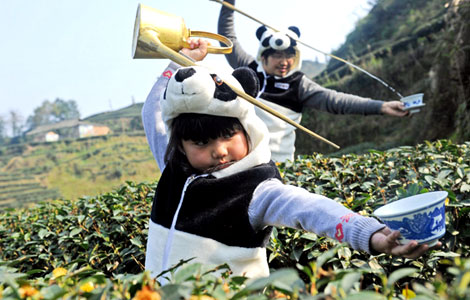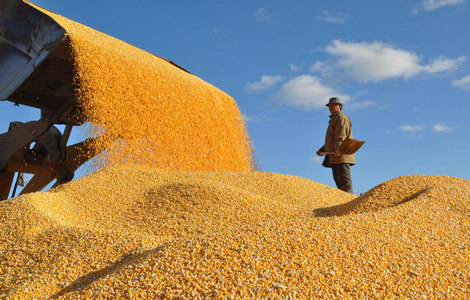
Increasing trade blamed as pests destroy crops
Alien species of plants and animals will become an increasing menace over the next decade due to the rapid development of the world economy and a lack of awareness of proper prevention measures, experts have warned.
A greater number and variety of invasive species may be accidentally introduced into China with the rapid growth of world trade, tourism and transportation, said Wan Fanghao, director of the department of invasive biology at the institute of plant protection under the Chinese Academy of Agricultural Sciences.
This will threaten agriculture and even human health, Wan said.
Imported agricultural products, packing boxes and containers can easily act as alien carriers, he told China Daily.
An invasion of alien species can cause untold damage if adequate measures to tackle it are not taken, he added.
China, one of the countries most affected, has confirmed more than 520 varieties of alien species, including 268 plants, 198 animals, and microorganisms, Wan said, citing statistics by the academy.
Annual economic losses in China caused by the presence of just 13 alien species, including whitefly, leaf miner and rice-water weevil, exceed 57 billion yuan ($9 billion), academy figures showed.
Border quarantine officers registered more than 320,000 detections of 3,400 harmful species at entry ports in the first nine months of last year, according to figures from the General Administration of Quality Supervision, Inspection and Quarantine.
Insects account for about half of the harmful species detected.
Other harmful species include weeds, roundworms, fungi, bacteria and viruses, according to Li Yuanping, a spokesman for the administration.
On Tuesday, the administration ordered stricter inspections on fruit imports from the Philippines after harmful organisms were found in several shipments.
It said insects and bacteria had been found in pineapples, bananas and other fruits imported from the Philippines in Shanghai, Shenzhen and Shandong.
Some invasive species, that could have been tackled or eliminated by strict prevention and control measures, now prevail across the country, experts said.
Political advisers signed a petition in January asking Yunnan provincial government to clean up 360,000 tons of water hyacinth floating on the Dianchi Lake, the Guangzhou-based Southern Weekly reported.
The water plant is about to get "out of control", it said.
The aquatic plant, which was imported from Venezuela into South China in the 1950s, helped pig farmers overcome a grain shortage because of its rapid growth rate.
But the plant blocks waterways and irrigation channels and hampers efforts to drain water-logged fields.
Water hyacinth has spread to 16 provinces, including Zhejiang, Fujian, Yunnan and Guangdong.
Failure to deal with invasive species is due to insufficient awareness of prevention and control measures, Wan said.
He cited red-eared sliders, a semi-aquatic turtle, as another example of an invasive species originally imported from the United States in the 1980s, where they are popular as pets.
An online retail trader told China Daily that he sold almost 200 red-eared sliders a month for 20 yuan per pair.
"Consumers always purchase them as pets or to release them to the wild. They hope this will bring good luck," he said.
Mei Xurong, head of environment and sustainable development in agriculture at the academy, said in February that the authorities should exercise extreme caution when dealing with species from other countries as the risks they pose are not fully understood.
A law clearly targeting invasive species is urgently needed in China, Wan said.
jinzhu@chinadaily.com.cn







